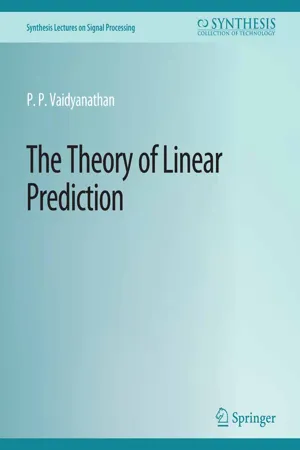
The Theory of Linear Prediction
P.P. Vaidyanathan
- English
- «PÐF»
- «Äväïläblé öñ ïÖS & Äñdřöïd Ü ü Ä»
The Theory of Linear Prediction
P.P. Vaidyanathan
«Äböüt Thïs Böök ö ñ»
Linear prediction theory has had a profound impact in the field of digital signal processing. Although the theory dates back to the early 1940s, its influence can still be seen in applications today. The theory is based on very elegant mathematics and leads to many beautiful insights into statistical signal processing. Although prediction is only a part of the more general topics of linear estimation, filtering, and smoothing, this book focuses on linear prediction. This has enabled detailed discussion of a number of issues that are normally not found in texts. For example, the theory of vector linear prediction is explained in considerable detail and so is the theory of line spectral processes. This focus and its small size make the book different from many excellent texts which cover the topic, including a few that are actually dedicated to linear prediction. There are several examples and computer-based demonstrations of the theory. Applications are mentioned wherever appropriate, but the focus is not on the detailed development of these applications. The writing style is meant to be suitable for self-study as well as for classroom use at the senior and first-year graduate levels. The text is self-contained for readers with introductory exposure to signal processing, random processes, and the theory of matrices, and a historical perspective and detailed outline are given in the first chapter.Table of Contents: Introduction / The Optimal Linear Prediction Problem / Levinson's Recursion / Lattice Structures for Linear Prediction / Autoregressive Modeling / Prediction Error Bound and Spectral Flatness / Line Spectral Processes / Linear Prediction Theory for Vector Processes / Appendix A: Linear Estimation of Random Variables / B: Proof of a Property of Autocorrelations / C: Stability of the Inverse Filter / Recursion Satisfied by AR Autocorrelations